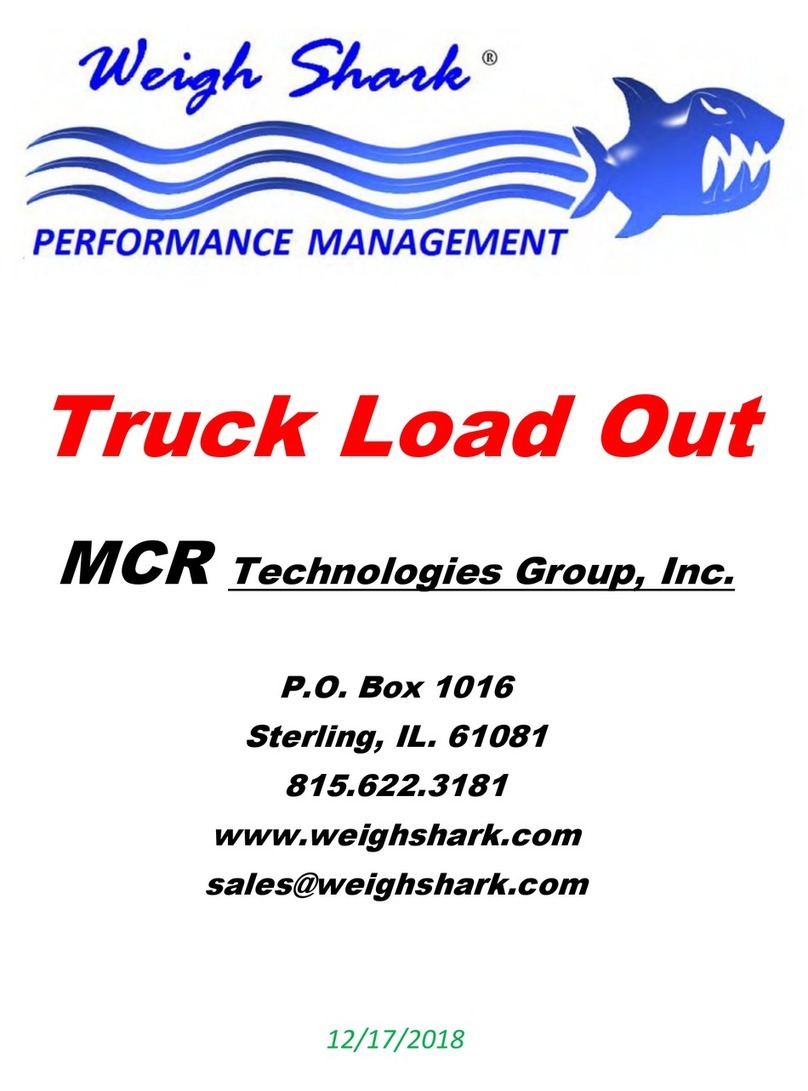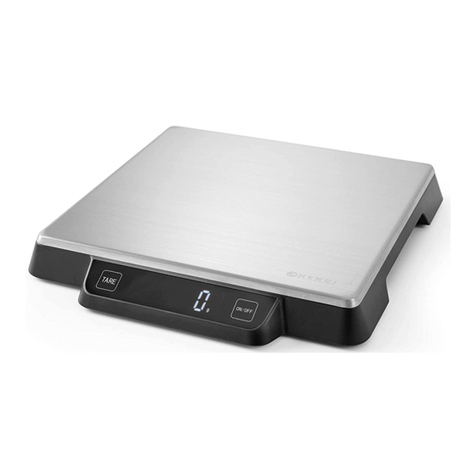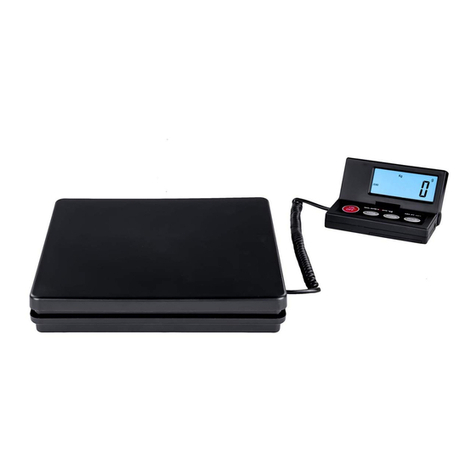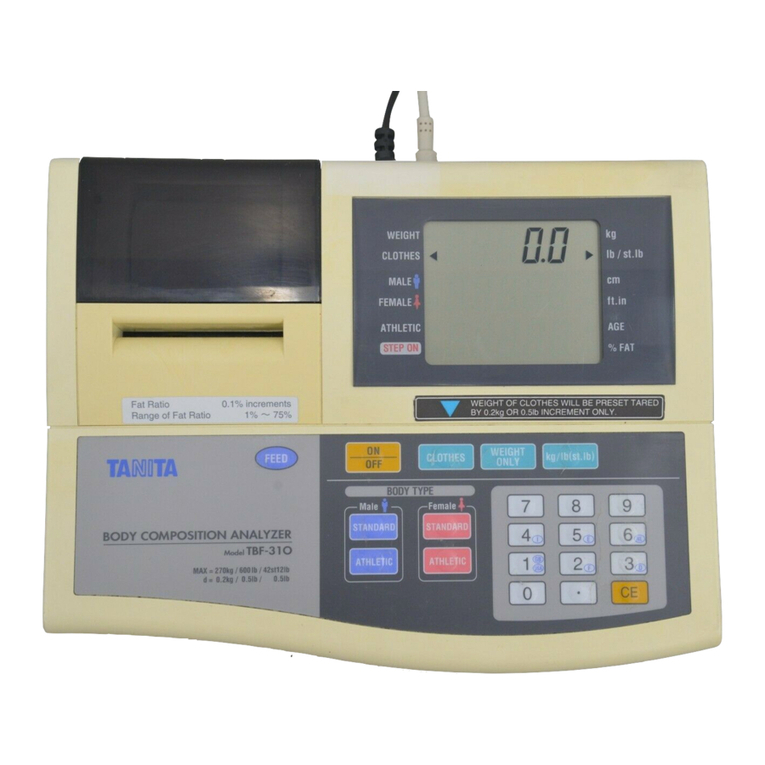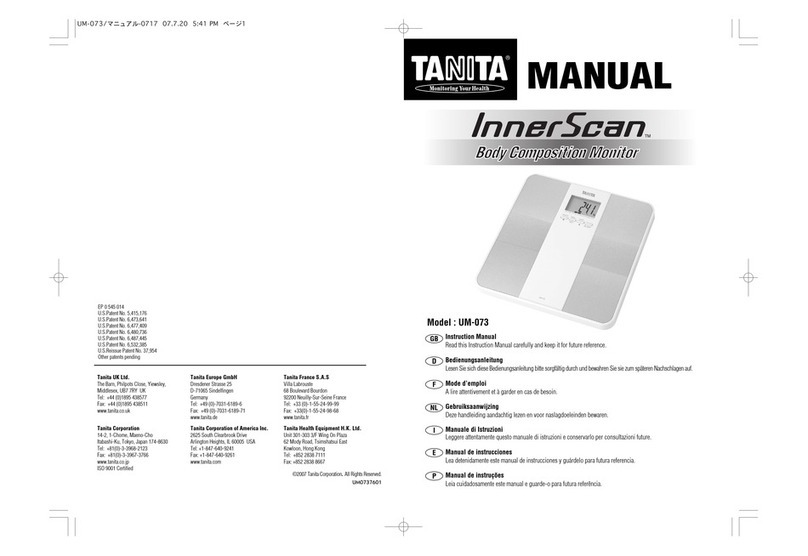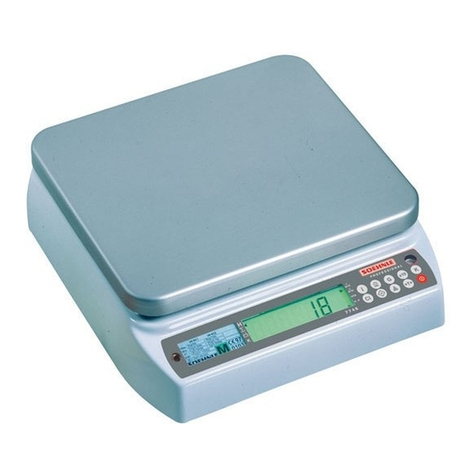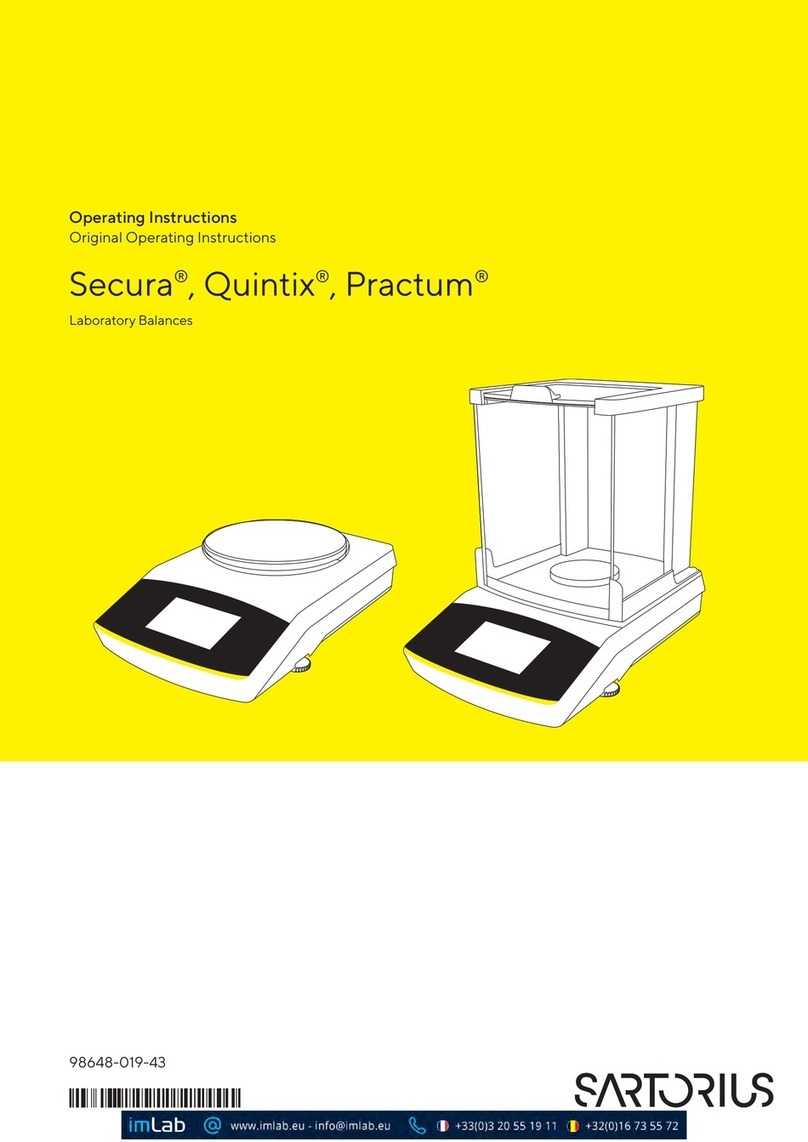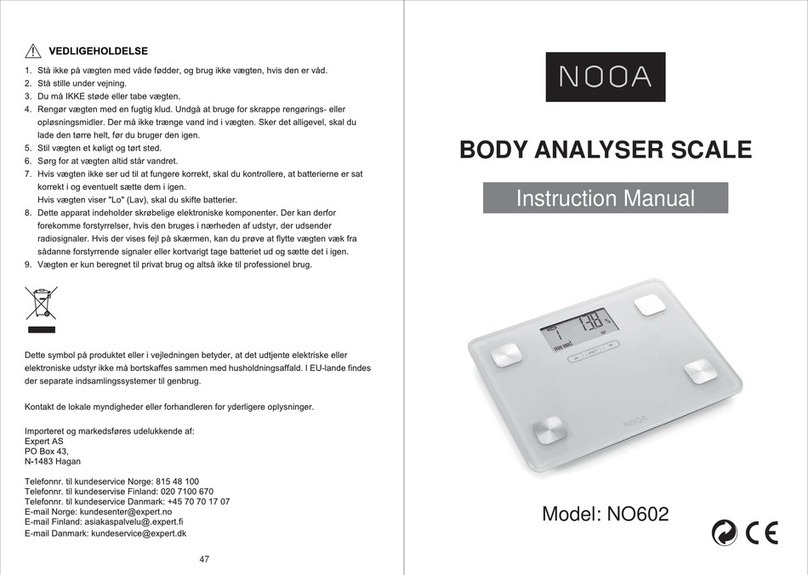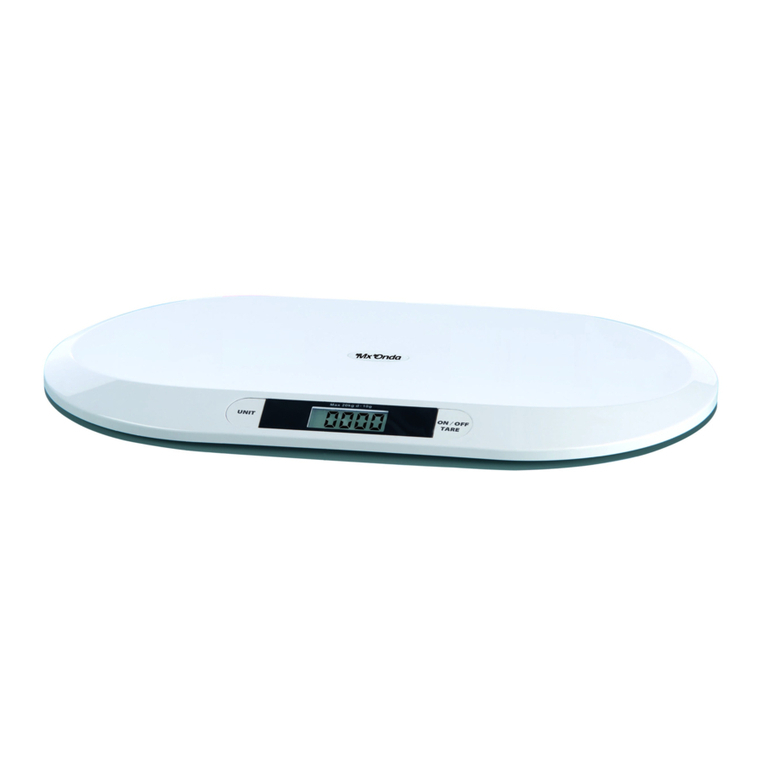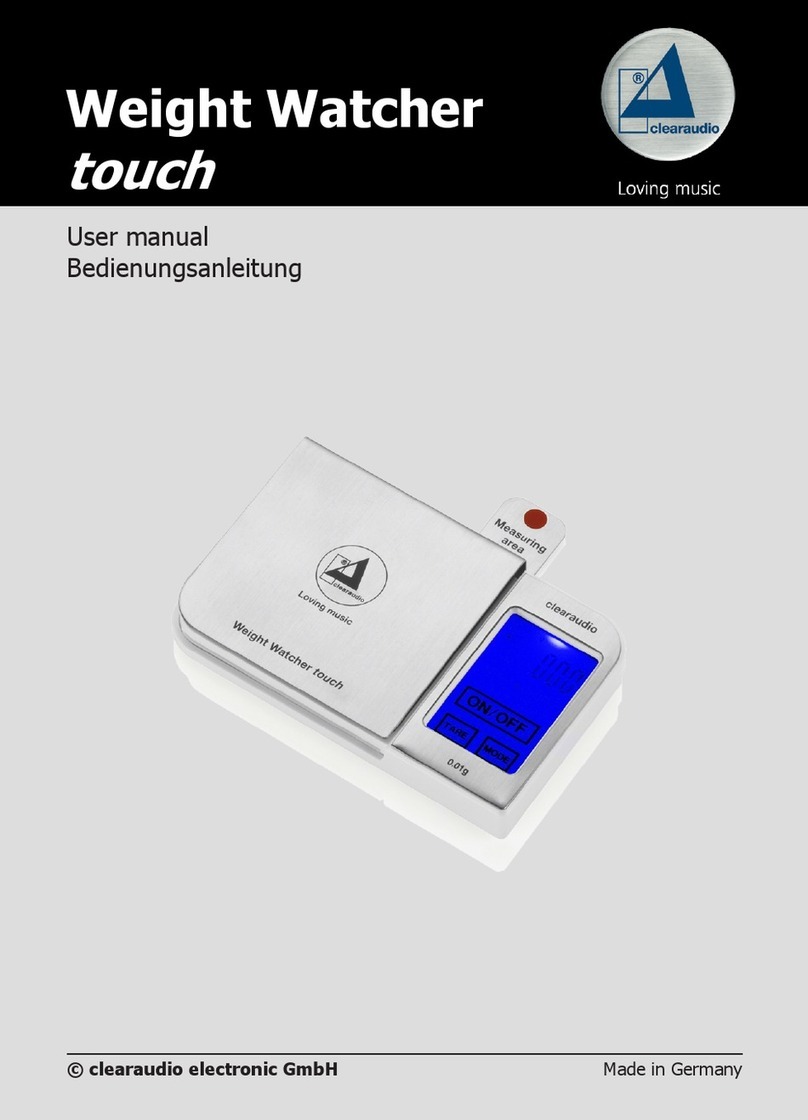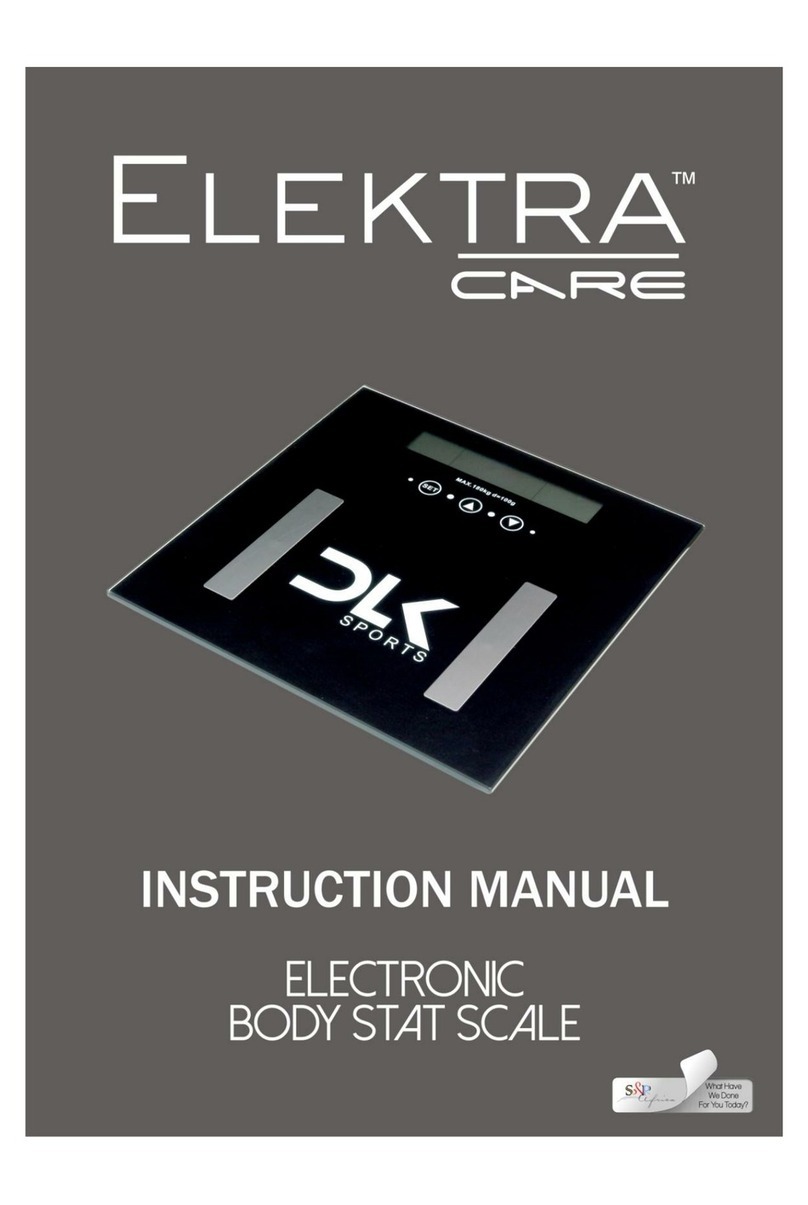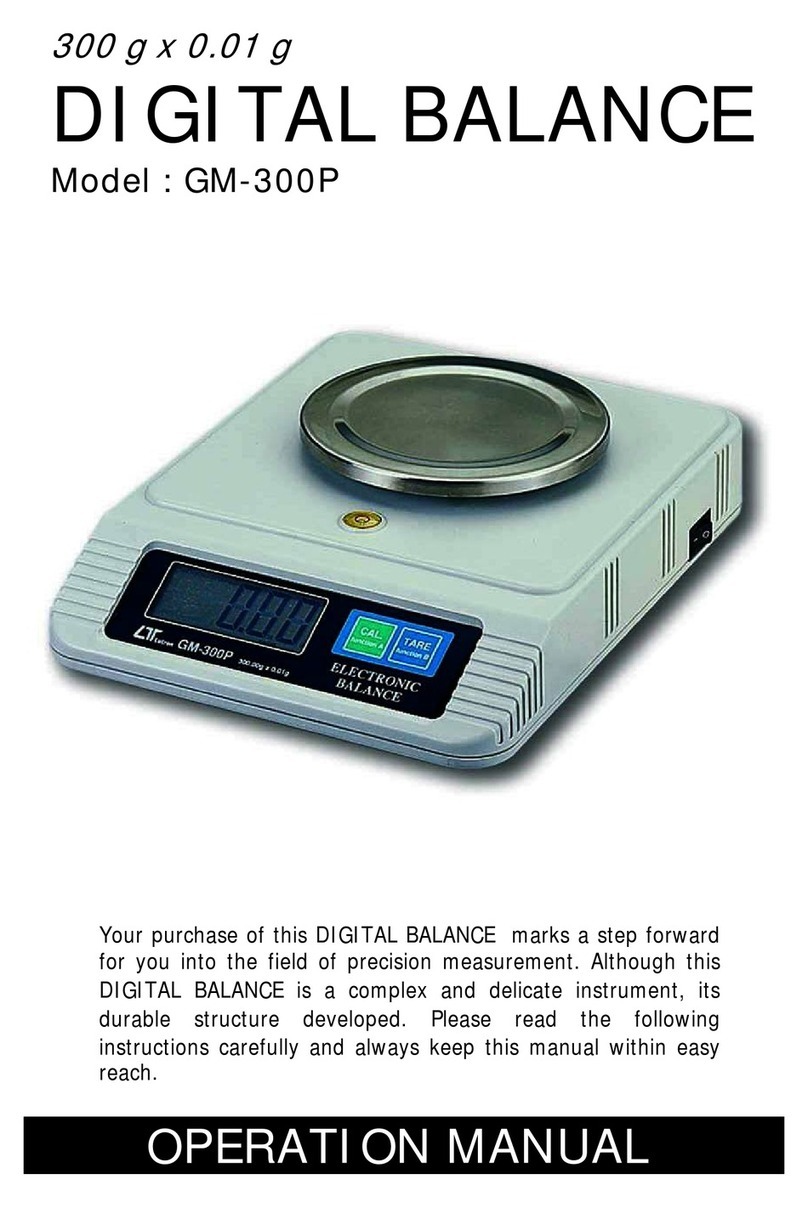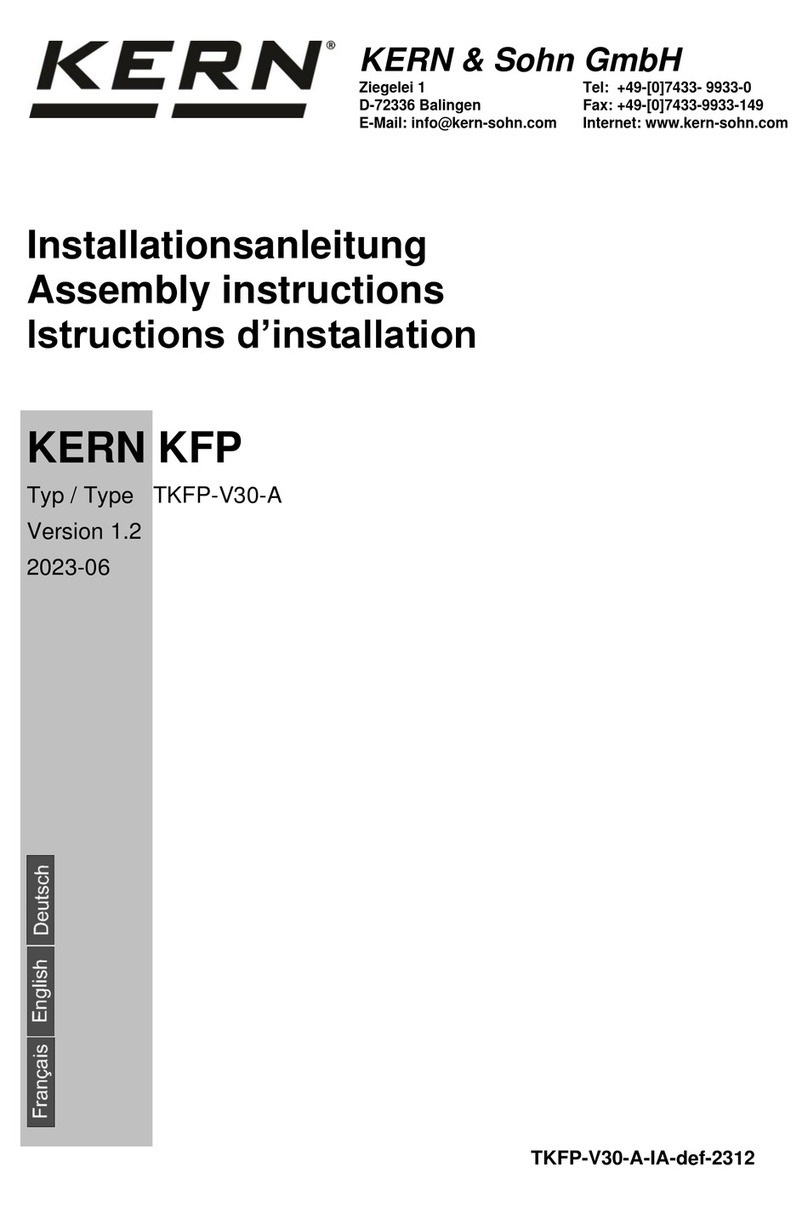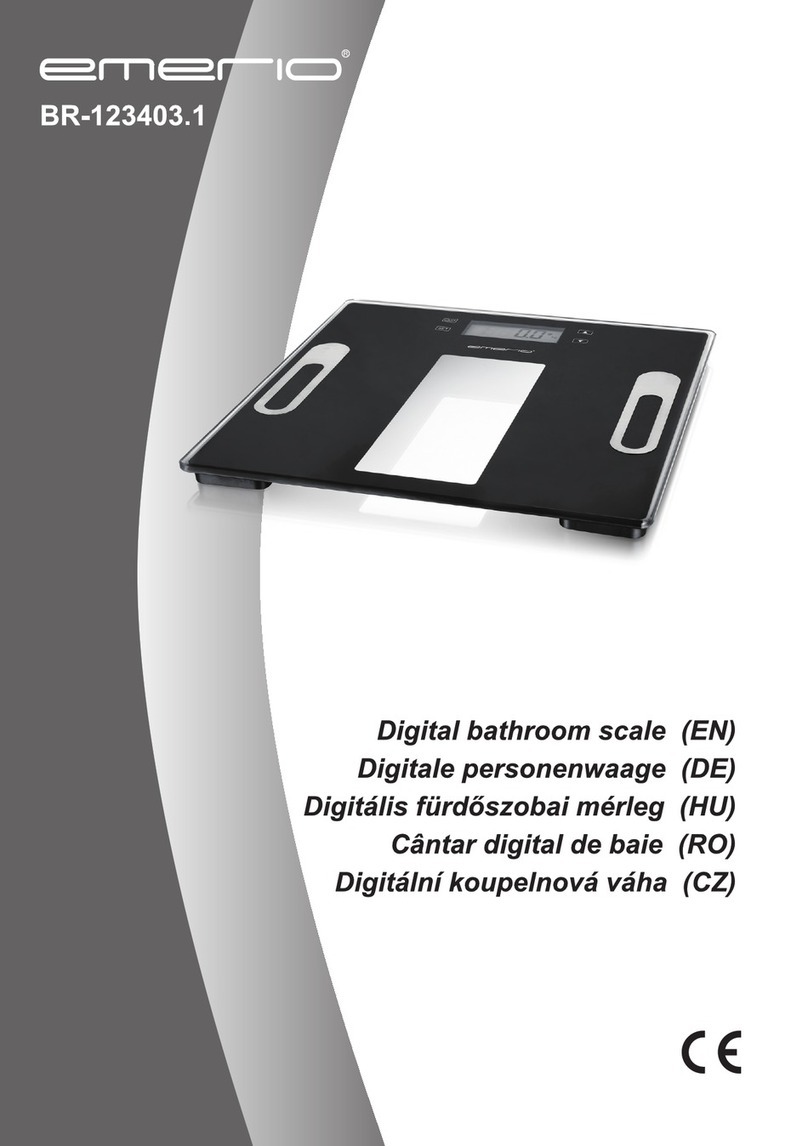MCR Technologies Weigh Shark Use and care manual

Installation &
Calibration
Manual
Made in the USA
/20
.$35FDIOPMPHJFT(SPVQ*OD
8FTUXPPE%SJWF
4UFSMJOH*-
1I &NBJMTBMFT!XFJHITIBSLDPN

Thank you for your purchase. Your
Scale has been
carefully designed to provide you with years of
operation and accuracy. We have designed features to allow
simple installation, calibration and operation of your scale.
Our standard features should provide you with the tools to
monitor and record your im
The software was designed and written with you in mind.
Operation is simple with the use of minimal buttons. No
formulas must be calculated and no switches must be set for
operation. Everything needed to calibrate your scale
accomplished via our software and
simply enter your calibration data, perform a couple simple
steps and your scale is calibrated.
Sincerely,
Mark Humphreys
President
, CEO, Founder
t
Thank you for your purchase. Your
carefully designed to provide you with years of
operation and accuracy. We have designed features to allow
simple installation, calibration and operation of your scale.
Our standard features should provide you with the tools to
monitor and record your im
portant production data.
The software was designed and written with you in mind.
Operation is simple with the use of minimal buttons. No
formulas must be calculated and no switches must be set for
operation. Everything needed to calibrate your scale
accomplished via our software and
high-speed
processor. You
simply enter your calibration data, perform a couple simple
steps and your scale is calibrated.
, CEO, Founder
n
This is noW
Scale.
® Belt
carefully designed to provide you with years of
operation and accuracy. We have designed features to allow
simple installation, calibration and operation of your scale.
Our standard features should provide you with the tools to
portant production data.
The software was designed and written with you in mind.
Operation is simple with the use of minimal buttons. No
formulas must be calculated and no switches must be set for
operation. Everything needed to calibrate your scale
is
processor. You
simply enter your calibration data, perform a couple simple
Legal for Trad
a Legal for Trade Scale.

Table of Contents
Page 1-5: Mechanical Installation
Page 6: Idler Alignment
Page 7-8: Electrical Wiring
Page 9-11: Multi Scale Option
Page 12-14: CALIBRATION - Auto Zero
Page 15-18: CALIBRATION - Span Calibration
Page 19: Material Test
Page 20: Advanced Scale Calibration
Page 21: Load %
Page 22: Display Definitions02'%860DQXDO
Page 23: Real Time Performance
Page 24: Totals - English-Metric Tons
Page 25-26: Analog Outputs (mA)
Page 27: Digital Inputs
Page 28: Digital Outputs
Page 29-31: Shaft Mounted Encoder Option (Option)
Page 32-33: Automatic Angle Compensator (Option)

Page 34-35: Ticket Printer (Option)
Page 36-38: Marquee Sign $GGHQGXP563DJHV56RSWLRQDOZLULQJ
Page 39: Scale Network Quick Setup
Page 40: Internet Access & Ethernet Diagram Example
Page 41: Remote Display 3 Option & Antennae Wiring
Page 42- 43: Mechanical & Integrator Data
Page 50: WARRANTY
Page 51: Belt Scale Maintenance
Page 52-56: Trouble Shooting Guide
Page 57: Installation Notes

*
BELT SCALE OVERVIEW
Mechanical Installation
1. Select an Idler
at least 5 idlers up from drop zone and 5 idlers back from
Head Pulley. (
See Illustration
order, mechanically
sound with
2. A Minimum
of 5 idlers:
is required.
(or recommendations on Next Page
idlers is
CRITICAL in the accuracy that you
3.
The scale should be installed within 50 feet of t
than 6m (20 ft.
) or 5 idler spaces to the end of the skirt boar
Single Idler Configuration
•
Straight conveyors are preferable to curved conveyors. Convex
(shown) or concave
curves are permissible at a distance of 20 feet or 5
idler spaces beyond the scale
Dual Idler Configuration
1
BELT SCALE OVERVIEW
ADDENDUM *
Mechanical Installation
at least 5 idlers up from drop zone and 5 idlers back from
See Illustration
Below) Idler should be
in good operational
sound with
rollers that
are turning with minimum effort
of 5 idlers:
same make, model, can size and degree of angle
(or recommendations on Next Page
) T
he selection of good
CRITICAL in the accuracy that you
r scale will be
able to obtain.
The scale should be installed within 50 feet of t
he loading point but not closer
) or 5 idler spaces to the end of the skirt boar
d.
Single Idler Configuration
Shown
Straight conveyors are preferable to curved conveyors. Convex
curves are permissible at a distance of 20 feet or 5
idler spaces beyond the scale
.
Dual Idler Configuration
Shown
at least 5 idlers up from drop zone and 5 idlers back from
in good operational
are turning with minimum effort
.
same make, model, can size and degree of angle
he selection of good
able to obtain.
he loading point but not closer
d.
Straight conveyors are preferable to curved conveyors. Convex
curves are permissible at a distance of 20 feet or 5

2
Weigh (Scale) Duty Idlers
(RECOMMENDED)
Idler misalignment amplifies the effect of belt tension and is the major
contributor of errors on Electro-Mechanical (E/M) belt weighing systems.
Idlers alignment can only be as good as the idler sets to be aligned.
Standard idlers vary from unit to unit in; troughing angle, T.I.R., idler
deflection etc.
This makes accurate alignment almost impossible. Poor roller balance can also
affect the scale performance.
To achieve the highest possible accuracy and most reliable operation one should
use Weigh (Scale) class idlers on: The Approach (before the weigh bridge)
The Retreat (after the weigh bridge) & The Weigh Bridge
Weigh (Scale) class idlers are designed to match the application and scale
model.
Each application is computer analyzed to optimize: Idler roll diameter, Roll shaft
diameter, Roll TIR, Roller dynamic balance, Idler base section, Deflections that
can be accommodated and Stiffness for very high speed applications.
These idler bases are manufactured to the stringent troughing angle tolerances
required for high precision weighing
duty.

3
-On application with higher belt speeds (in excess of approx. 300 feet/min)
-The idler rolls are dynamically balanced
-Additionally (steel rollers only)
-The idler rolls are selected to meet the low breakaway torque required for
weighing duty.
4. Install the load cell assembly so that end with the load cell cable will be in the
direction of the tail pulley and the V-Block Mounting Hole will be facing
the direction of belt travel
DIRECTION OF TRAVEL
5. Remove bolts that Secure Idler to Conveyor.
6. Cut themounting feet off the idler as shown in picture above.
7. Slide the load cell assembly under your idler and position it to line up the
holes on your conveyor that previously secured the idler.
8. Bolt the assembly to your conveyor.
9. Install and secure the idler to the load cell assembly via the V blocks and
bolts provided.
*0D[LPXP7RUTXHRI9%ORFN%ROWVLVIRRWSRXQGV
*DO NOT WALK ON BELT or risk damaging Load cells!!

4
10. Go to the other side of the conveyor and repeat this process.
11. Your idler should now be supported by the load cell assemblies and should
not be making contact with the conveyor frame.
12. Route your load cell cables to the side of the conveyor that you will be
installing the control box. DO NOT ROUTE NEAR HIGH VOLTAGE!!
13.Run a string along the edge of 2 idlers preceding and 2 idlers following
your idler to establish that all 5 idlers are level. Adjust any idlers that are not
in alignment using the shims provided. This step is important to maintain
constant belt pressure on the scale when the belt is empty since during the
calibration process we establish the weight of the empty belt for tare.
SEE NEXT PAGE!!
14. Select a different idler to install your speed sensor assembly. It can be
any other idler. We suggest you select the next idler in the direction of where
you will install the control box.
Minimum Belt Speed recommended is 40 FPM.
'LUHFWLRQRI7UDYHO

5
Using the special Tri-Fold bolt provided, secure the speed sensorassembly
to your idler.
Route the speed sensor cable and secure it to the idler with cable ties.
Run all three cables to the location where your control box is installed
$ DO NOT ROUTE ALONG HIGH VOLTAGE POWER or
near a VFD!
% Do Not Cut Cables Unless Absolutely Necessary.
& 8VH%HOGHQRUHTXLYDOHQWWZLVWHGVKLHOGHGSDLUFDEOHWRH[WHQGFDEOHV
D. Weigh Shark Junction Box or Soldering of Cable with Heat Shrink must
be performed when extending cables.
18. Install your Integrator (Control box)
'LVSOD\
Mount Integrator away from vibration to avoid damage to circuit board
DQG'LVSOD\
Mounting near vibration will void warranty.
Do Not Mount near a Variable Frequency Drive (VFD)
Mount out of direct sunlight to avoid damage to Liquid Crystal
*IMPORTANT *
The Idler mounted on the scale assembly MUST be
removed before Overland Transport to avoid damage
to load cells.

Shims are
Raise 2 sets of
Idlers directly Before & After the Scale Idler
Shims are
Included and MUST be used to
Idlers directly Before & After the Scale Idler
6
Included and MUST be used to
Idlers directly Before & After the Scale Idler

7
ELECTRICAL WIRING
1. Route your load cell and speed sensor cables through the special 4-hole
cable grip. Locate the load cell terminals and connect. Wire the speed
sensor cable to the indicated terminal also on the circuit board.
2. Route your power cable to the control box and run thecable though the 1
hole cord grip.
3. Wire either 110 VAC or 220 VAC single phase or 12-24 VDC to the
terminals indicated on the board using 14-gauge wire. (Diagram below.)
4. When all electrical connections are properly made, turn ON the unit at the
Power Switch on the board.
When extending Speed Sensor or Load Cell Cables it is highly
recommended to use a Junction Box or Soldering of Wires with Heat Shrink
Wrap. Wire Nuts or Butt Connectors are NEVER to be used.
Please Contact Weigh Shark for Recommended Total Distance Load Cells
Cables can be run.
CIRCUIT BOARD DIAGRAM

8
CORRECT CIRCUIT BOARD & DISPLAY
WIRING.
5.
Circuit Board Display

9
Single, Dual, Triple and Quad Idler Scales
Our WEIGH SHARK integrator will support up to
8 Load Cells (4-pairs)
Our Standard Weigh Shark Scale is a single idler scale. It can be
converted to a Multi Idler Scale by the addition of pairs of load cell
assemblies on adjacent idlers. Multi idler scales increase accuracy by
weighing more material for a longer period of time.
Converting a Single Idler Scale to a Multi Idler Scale.
Bolt additional pairs of load cell assemblies to the adjacent idler
using procedure shown on page 1.

10
STRING LINING: -Very Important- All idlers including a minimum
of one idler before and after idler scale are mounted on.
Recommended String lining 2 Idlers Before & After Scale Idler!
When calibrating your scale you will be asked to enter Idler Span
Distance during the Span Test.
Let's say your idlers are on 4-foot centers:
Single Idler Scale Span = 8 feet.
Dual Idler Scale Span = 16 feet.
Triple Idler Scale Span = 24 feet.
Quad Idler Scale Span = 32 feet.
* See Following Page! *
During the Next Step of the SPAN TEST you are instructed to enter
the TOTAL value of test weights including the bar you will be using.
You must put weight on every scale idler using these guidelines
TEST WEIGHT VALUE RECOMMENDATIONS:
Model 150 = lbs. Model 250 = 120 lbs. Model 500 = lbs.

11
-Continue with Calibration Process-

12
CALIBRATION
The calibration is divided into two categories.
A) Auto Zero
B) Span Calibration
The display will take you step by step through both processes and instruct you on
what is taking place during the process and what to do next.
Auto Zero
1. The first step of calibration is to weigh your Empty Belt and Idler and tare
off the weight of the belt and the idler so the scale only weighs material on
the belt.
2. Push the arrow key located under “Calib.” to select this calibration process.
3. The main calibration screen will appear. An arrow will point to “Zero Test –
Press Enter”
4. Mark the belt or use the belt splice as your reference. Follow the
instructions on the display.

13
5. Press the Arrow under START when your Empty Belt passes a reference
point start to measure and weigh your belt. The display will show you
information during this step. Watch your belt make one (1) revolution and
press the arrow under END after completion of this one revolution.
6. The screen will automatically change. It will show Belt Length (feet), Old
Zero Value and New Zero Value. It will instruct you to press the arrow under
APPLY. This will establish your Auto Zero value. The screen automatically
goes back to the main calibration screen.

14
PREVIOUS FEATURE
Onceyou have established a Zero Number you have also established a belt
length for your conveyor. By using the PRV (previous) feature on the
screen, it will allow you to start a zero test without having to wait for your
splice or mark on the belt. Keep in mind that the belt MUST be empty and
no calibration weights or bar applied.
This feature is only used for recalibrating your zero number with your
existing belt length.
If you lose your settings for any reason, you will need to run a New Zero
Test following the instructions beginning on page 9.

15
Span Calibration
1. Use the ▼arrow key located to the right of the display to move the
cursor arrow (>) down to the next line. “Span Test – Press Enter”.
2. Press ENTER
3. The screen will automatically change and instruct youto “Press
START to perform a Span Calibration.
4. Press the arrow under START to start your process.
5. The screen will change and ask you to “Verify the Idler Span”. (If
your idlers are on 4 foot centers….. you have a “Span” of 8 feet)!
6. The screen will instruct you to Press NEXT to continue or Press
EDIT to Change. The Idler Span value defaults to 8.00 feet. If you
need to change this value, press the arrow under EDIT.
7. To EDIT, press the ◄or ►Arrow keys to move the cursor to
activate the cell you wish to change.
8. Use the + and - keys to change the value up or down.
9. Press the arrow under NEXT to continue.

16
10. The screen will change and ask you to “Verify the Test Weight”
value. Again you can accept the default value (100 lbs.) NEXT or
select EDIT and change the value. Enter the total weight of your
test bar and weights.
-If youare going to run a material test to calibrate your scale….
-You can skip these steps……
-Press EXIT….Catch material and follow the instructions on:
PAGE 1…”Material Test”
11. When you press NEXT the screen changes and reads: “Install
Test Weights on the scale". When safe, run the belt empty.”
INSTALL YOUR TEST BAR AND WEIGHTS though the holes in
the “V” Blocks
12. Start up your conveyor with the belt running empty. Press the
arrow under NEXT to start. Since we previously measured your belt,
you can start this process at any time and do not have to wait for
your reference mark or splice.
13. The screen will again automatically change to show you that the
Span Calibration process is taking place. It will show you how many
revolutions and feet remain during the test. Since you measured the
belt length during the Auto Zero calibration process we know your
belt length and count down feet during this step.
Other manuals for Weigh Shark
1
Table of contents
Other MCR Technologies Scale manuals
